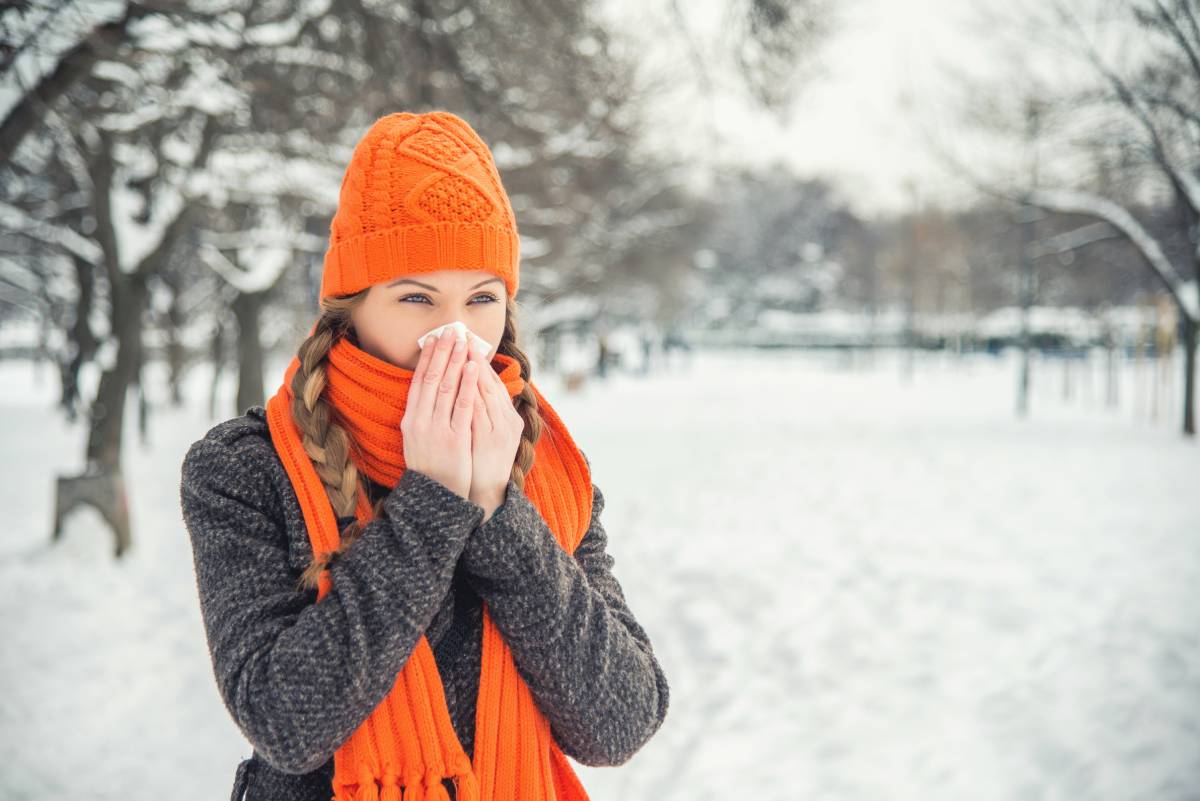Cases of the flu, COVID-19, and respiratory syncytial virus are climbing this winter as cold, dry weather continues in the northern United States and U.K. (3). Respiratory illness is one of the many health issues that accompany cold waves. As climate change creates unstable polar vortex patterns in the Arctic, cold weather is traveling into lower regions and bringing about cold waves in climates that used to be consistently warmer (6).
These climate-change induced cold waves are extremely concerning for public health, considering that cold weather is responsible for more deaths per year than hot weather (5). Increasingly frequent cold weather patterns due to climate change is a concerning public health issue because cold-related health concerns can take place year-round and occur even when conditions are not extreme (5). In this article, we examine the various health concerns in cold waves and their effects on vulnerable communities.
People who have underlying health problems—such as asthma, heart disease, or diabetes—are particularly vulnerable to cold conditions. For example, cold weather increases the risk of cardiac issues such as heart attack and stroke (3). In response to colder temperatures, blood vessels near the skin contract in order to minimize heat loss to the environment (3). As a result, blood pressure rises, putting the cardiovascular system under greater strain (4).
Additionally, cold weather also increases stress on the respiratory system (3). Breathing in cold, dry air can irritate the upper airways and trigger the symptoms of respiratory diseases such as asthma (3). And as people spend more time indoors to stay warm, respiratory illnesses like the flu and rhinovirus spread more easily from person to person (3).
Furthermore, colder-than-normal temperatures increases the risk of hypothermia and frostbite. Hypothermia occurs when prolonged exposure to the cold causes the body to use up all of its stored energy, resulting in abnormally low body temperatures (2). If a person is wet from rain, water, or sweat, hypothermia can occur even at temperatures over 40 degrees Fahrenheit (2). Frostbite happens when areas of the body that are exposed to cold freeze—most commonly, the fingers, toes, nose, ears, and cheeks. Amputation may be required in very serious cases (2). Dressing properly for cold weather and protecting exposed skin is essential to preventing hypothermia and frostbite.
There isn’t a single, universal temperature that constitutes “extreme cold;” rather, “extreme cold” varies from region to region based on historical climate patterns (2). Communities that have not experienced colder temperatures in the past may be hit harder by climate change-induced cold waves, since they are less likely to be well-prepared for colder temperatures.
Children, the elderly, the homeless, and low-income communities are especially vulnerable to extreme changes in weather patterns, including cold waves. Because children have a smaller physique than adults, their body stores less heat and therefore loses warmth more quickly in the cold (4). Older adults, especially those over 75, have several risk factors that predispose them to cold-related health concerns. For instance, aging causes the layer of fat under the skin to become thinner, reducing the body’s natural insulation (4). Moreover, older adults have slower metabolisms and reduced organ function, making their bodies less adaptable to dips in temperature. Elderly people who are isolated from social networks may not have friends or family to check in on their well-being during cold waves and ensure that their homes are properly heated.
Perhaps the hardest hit during cold weather are the homeless, who are exposed to extreme temperatures if they do not have adequate shelter and heating. Low-income communities with less efficient heating systems or inadequate access to energy are also particularly vulnerable (3).
Proper preparation is essential to protecting yourself against the negative health effects of cold waves. Dressing warmly, ensuring that your home is properly heated and insulated, and having enough food and supplies to wait out a winter storm is key to staying safe and healthy (2). Moreover, community and governmental efforts to protect those that are most at risk for cold-related illnesses, such as those who can’t ensure the above protections, is vital for public health as cold waves become more common in many regions.
References
- “Cold Stress – Cold Related Illnesses.” Center for Disease Control and Prevention, 6 June 2018, www.cdc.gov/niosh/topics/coldstress/coldrelatedillnesses.html
- “Extreme Cold: A Prevention Guide to Promote Your Personal Health and Safety.” Centers for Disease Control and Prevention, 3 Dec 2012, www.cdc.gov/disasters/winter/guide.html
- Law, Tara. “Cold Weather Can Be Dangerous for the Human Body. This Winter Worries Experts.” TIME, 15 Nov 2022, time.com/6228727/cold-weather-health-risks-winter/
- Sample, Ian. “UK cold weather: what are the health risks and who is most affected?” The Guardian, 7 Dec 2022, www.theguardian.com/society/2022/dec/07/uk-cold-weather-what-are-the-health-risks-and-who-is-most-affected
- Seltenrich, Nate. “Between Extremes: Health Effects of Heat and Cold.” Environmental Health Perspectives, vol. 123, no. 11, doi: 10.1289/ehp.123-A275
- Varanasi, Anuradha. “Climate Change Induced Cold Waves Increase The Mortality Risk of People With Heart Failure By 37%.” Forbes, 12 Dec 2022, www.forbes.com/sites/anuradhavaranasi/2022/12/12/cold-waves-increase-the-mortality-risk-of-people-with-heart-failure-by-37/
